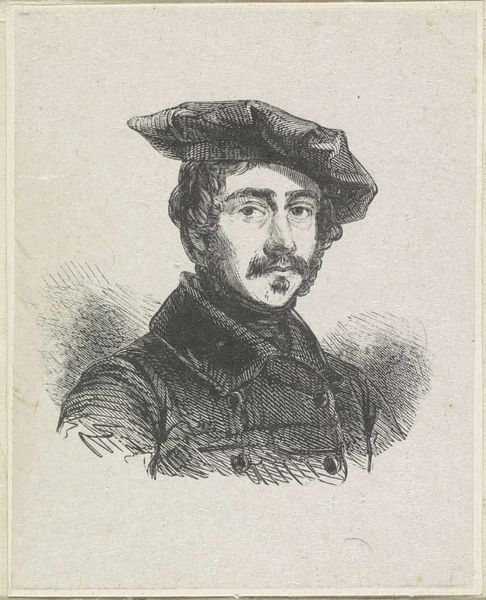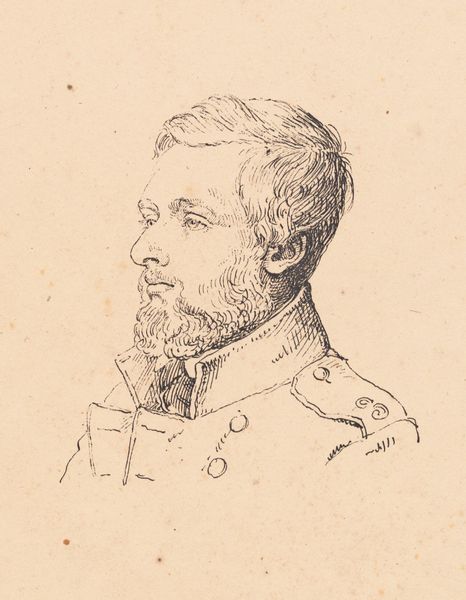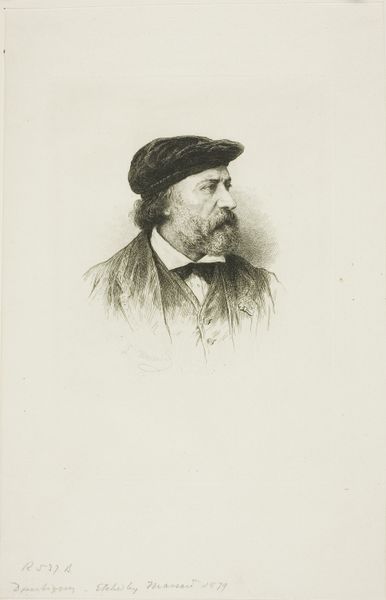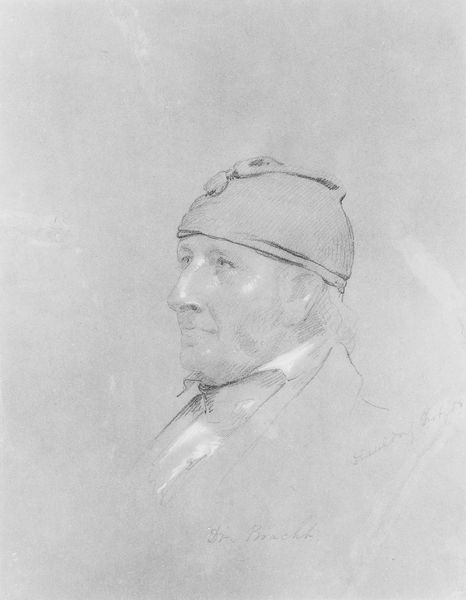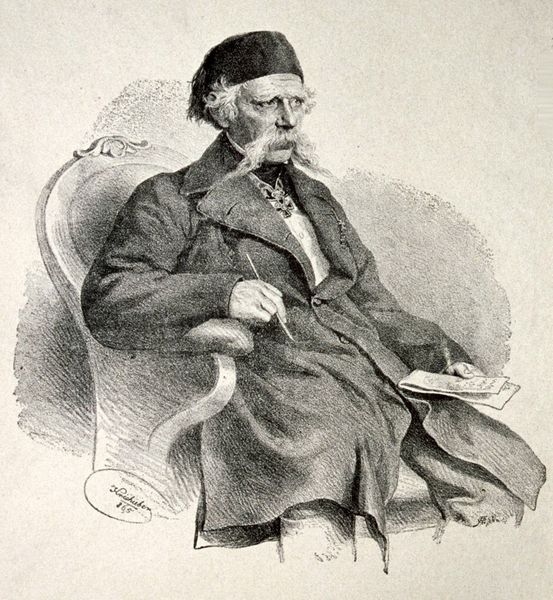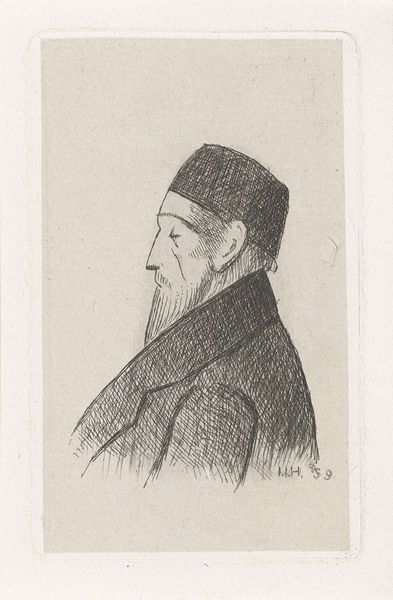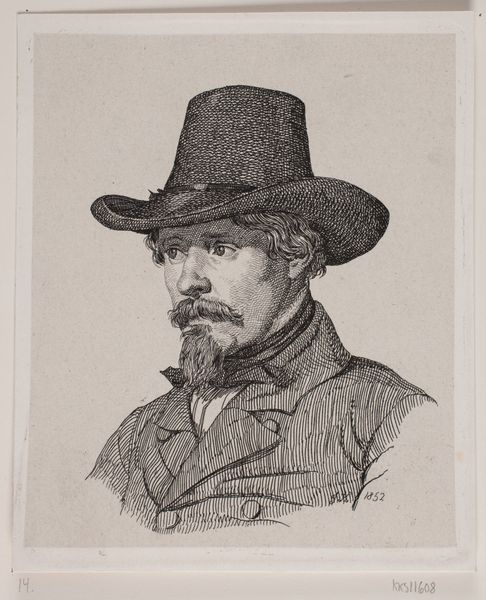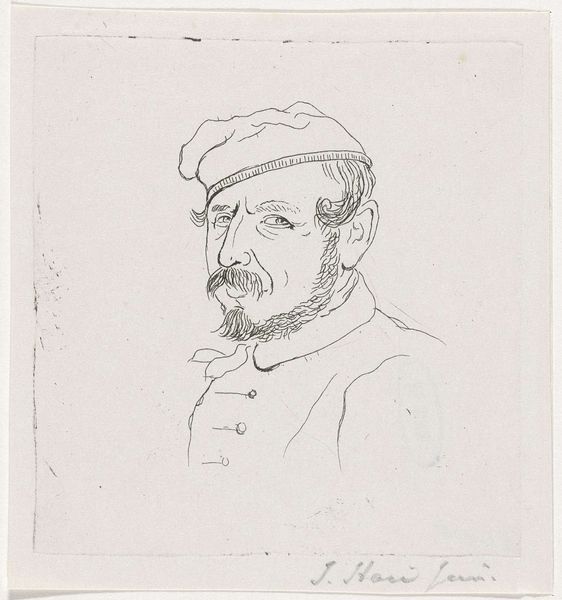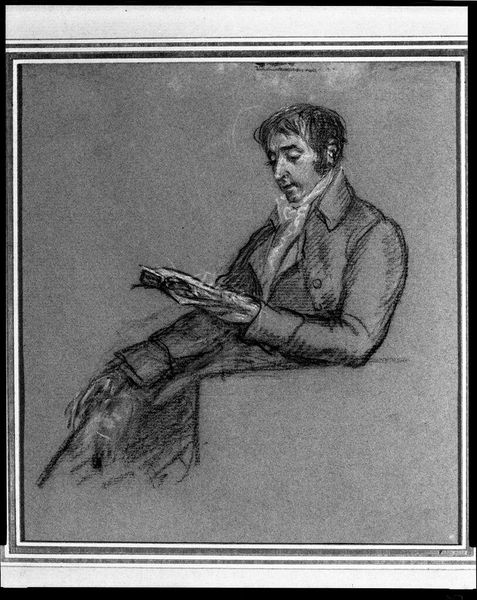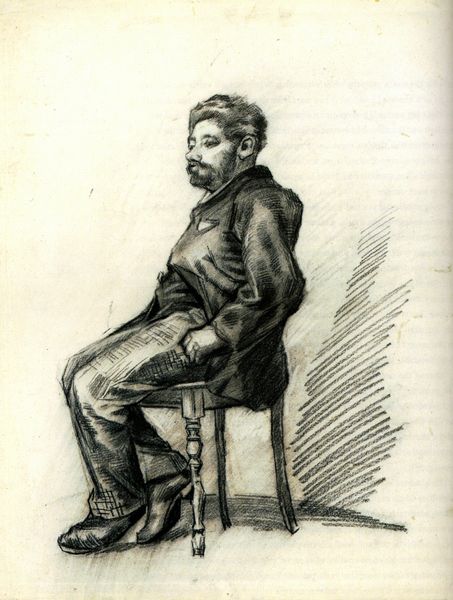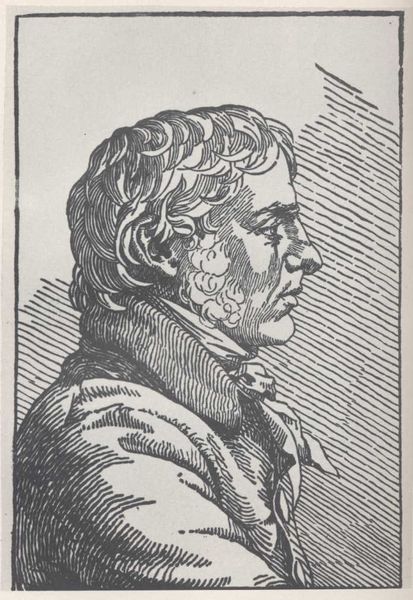
Copyright: Public domain
Editor: This is Ilya Repin's 1866 pencil drawing, "D.V. Karakozov". There's a stark, almost unsettling feeling to it, given its subject matter, almost as if Repin intended it as a political statement. What stands out to you when you look at this portrait? Curator: Well, it's crucial to consider the context. Karakozov attempted to assassinate Tsar Alexander II in 1866, the very year Repin created this drawing. This makes it more than just a simple portrait; it's a document deeply intertwined with a pivotal moment in Russian political history. Notice the sketch-like quality - does that lend it an immediacy, a sense of urgency? Editor: I can see that, yes. It’s as if Repin wanted to capture a likeness as quickly as possible, given the historical moment. I wonder if that quickness conveys judgement. Curator: Precisely. Consider Repin’s own political leanings. He was known for his Realist portrayals of Russian society, often with subtle critiques of the established order. How does this knowledge shift your perception of the piece? Does the unflinching nature of the drawing read as sympathetic or condemning, given Karakozov's actions were seen as a challenge to that established order? Editor: I suppose I initially saw the roughness of the lines as a kind of emotional intensity, but I guess it is ambivalent. I never thought how it might implicate Repin too. Curator: The piece operates within a network of social anxieties and political statements. Even the choice of pencil, a readily available medium, speaks to the accessibility of political discourse. Editor: This has really opened my eyes. It is not just a drawing of a man but a representation of political anxieties! Curator: Exactly. It reveals the potent role art can play in reflecting and shaping public perception of significant political events.
Comments
No comments
Be the first to comment and join the conversation on the ultimate creative platform.
